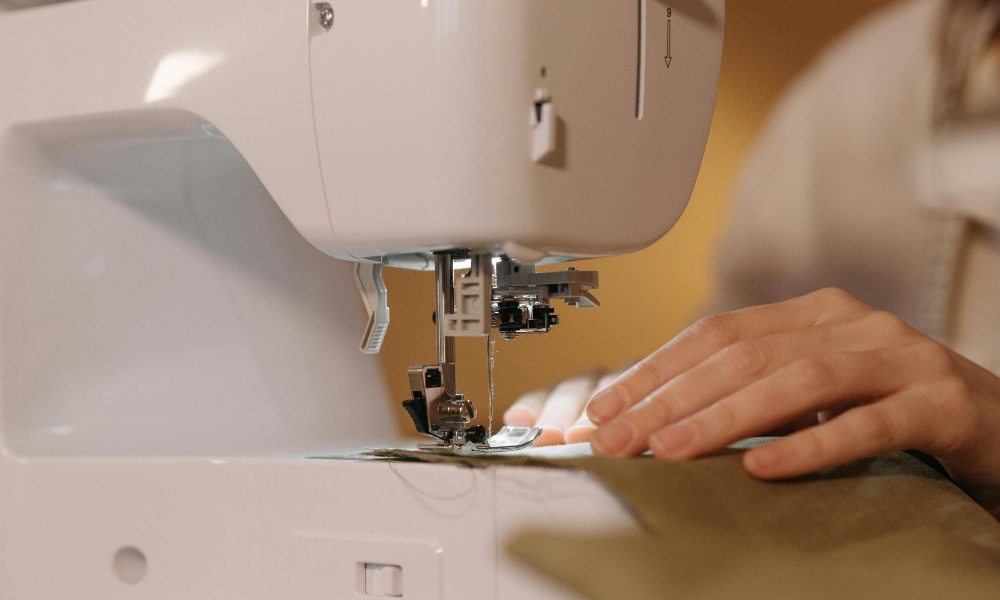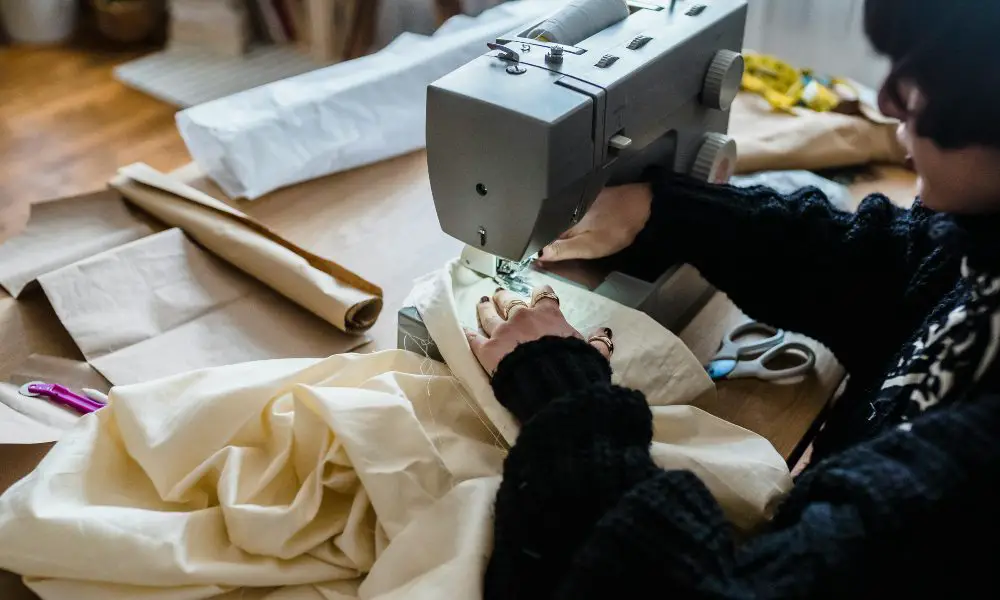Sewing two pieces of fabric together is a fundamental skill every sewer should master. To accomplish a refined and expert appearance, it is crucial to connect fabric pieces flawlessly, whether working on a straightforward task or a complicated garment. Here’s a concise overview of how to sew two pieces of fabric together:
- Prepare fabric by prewashing, pressing, and cutting accurately
- Pin or baste edges together, aligning carefully
- Sew using a straight stitch or suitable alternate stitch
- Trim and press seam allowances neatly
- Optional: Add embellishments like trims, piping, or serged edges
Are you ready to improve your sewing skills and create beautifully constructed projects? Read on for a comprehensive guide with expert tips and tricks.
Fabric Preparation
Before you start sewing, it’s crucial to prepare your fabric correctly. Prewashing the fabric according to the care instructions will prevent future shrinkage or color bleeding. Press the fabric using an iron to remove wrinkles and creases, ensuring a smooth sewing surface.
Cutting Accurately
Cut your fabric pieces precisely using a rotary, ruler, and self-healing mat. Double-check measurements and markings to avoid costly mistakes. Accurately cut pieces will make it easier to align the edges when sewing.
Gathering Supplies
Gather all necessary tools and supplies, such as scissors, pins, thread, seam ripper, and a sewing machine. Having everything within reach will make the sewing process smoother and more efficient.
Pinning and Basting
Aligning the fabric edges correctly is paramount for achieving a neat, professional seam. Use straight pins or basting stitches to hold the layers together temporarily.
Pinning
Pin at regular intervals, about every 4-6 inches, inserting pins perpendicularly to the fabric edge. This will help keep the edges aligned as you sew.
Basting
Alternatively, baste by sewing long, loose stitches that will be removed after the final seam is sewn. Basting can be especially helpful for delicate or slippery fabrics that shift during sewing.
Sewing Seams

Straight Stitch
The most popular and adaptable stitch for sewing fabrics together is the straight stitch. Before stitching, adjust your sewing machine’s stitch length and tension according to the fabric type and weight. Make sure to backstitch at the start and end of every seam to ensure the stitches are securely fastened.
Maintain a consistent seam allowance, typically 5/8 inch, as you guide the fabric edges through the machine’s presser foot. Sew slowly and steadily, avoiding puckering or stretching the fabric.
Alternate Stitches
While straight stitches suit most fabrics, certain materials may require alternative stitches. Use a zigzag stitch for stretchy fabrics like knits to allow for flexibility. Overcasting or serging raw edges can prevent fraying and add a professional finish.
Topstitching, a line of visible stitching sewn close to a seam, can be decorative or reinforce high-stress areas like collars or pockets.
Finishing Touches
Trimming and Pressing
After sewing your seam, trimming the seam allowances is essential for a neat appearance. It is recommended to use sharp scissors or a seam ripper to meticulously cut off surplus fabric while maintaining a 1/4 inch allowance. Press the seam open or to one side, depending on the project’s requirements and fabric type.
Embellishments and Seam Finishes
Consider incorporating embellishments or specialized seam finishes to add a personalized touch or enhance durability. Decorative trims, piping, or cording can elevate the visual appeal of your projects. Serging or overlock stitching the raw edges provides a clean, professional finish while preventing fraying.
For a couture-inspired look, try creating mitered or French seams, which enclose the raw edges within the seam for a neat, tailored appearance.
FAQs
Can I sew two pieces of fabric together by hand?
You can join fabric pieces using hand-sewing techniques like the running stitch, backstitch, or whip stitch. However, machine sewing is generally faster and more secure for most projects.
What should I do if my fabric is too thick for my sewing machine?
If you’re working with thick or multiple layers of fabric, consider using a specialized needle designed for heavy-duty materials or hand-basting the layers together before machine sewing.
Is it possible to substitute fabric glue for sewing?
Fabric glue can be a temporary solution for joining fabric pieces, but it’s not as durable or flexible as sewing. It’s best used for simple projects or temporary fixes.
How do I sew sheer or delicate fabrics together?
When working with sheer or delicate fabrics, use a smaller needle, adjust the tension on your sewing machine, and consider using a stabilizer or tissue paper underneath to prevent shifting or puckering.
What if my fabric pieces don’t line up perfectly?
If your fabric edges don’t align perfectly, try basting the pieces together first, then adjust and re-pin as needed before sewing the final seam.
***
By following these steps and techniques, you’ll be well on your way to sewing two pieces of fabric together with precision and confidence. Practice makes perfect, so don’t be discouraged if your initial attempts aren’t flawless. Happy sewing!
Are you prepared to take on your upcoming sewing project with enhanced skills? Let me know if you have any other questions!
***
Main image: pexels




